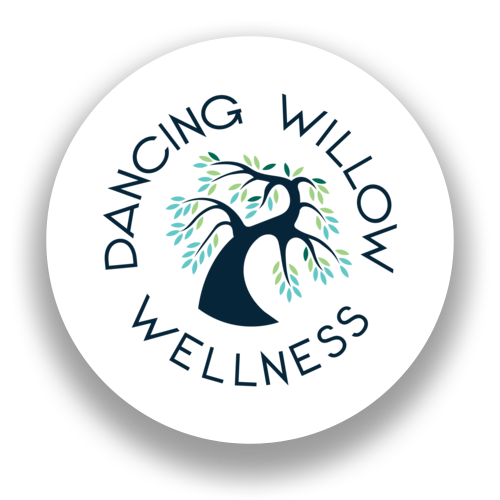
Cupping
Therapeutic cupping or cupping is an ancient healing practice that has been used for centuries in many cultures around the world.
Cupping is similar to deep tissue massage in that it works to restore movement and flow to an area that’s causing pain. For deep tissue massage, this is accomplished by pressing into the body, working the area and then releasing. Therapeutic cupping works in the opposite way, the cups gently lift the tissues up and create space without the need to press into the body. Cupping is a great option for those who don’t enjoy deep tissue massage or find it painful.
Sometimes, the tissues (muscles, connective tissue or fascia and more) in our bodies can become stuck. When this happens, the natural flow in those areas can become restricted which can cause pain. This can happen for a number of reasons, the three most common are:
An injury (new or old)
Lack of movement in an area (restricted range of motion)
Inflammation
We typically use a form of cupping called moving cupping. This helps to alleviate pain, bring new blood flow to the area being worked on and loosen tight muscles. This can be a very enjoyable introduction to cupping and many have commented that it’s their favourite type of cupping.
Therapeutic cupping may help to:
Increase physical movement (range of motion)
Alleviate muscle tension or pain
Alleviate gut disruption (acid reflux, constipation and/or diarrhea)
Clear congestion (frequent colds/flus, sinus congestion)
Rehydrate fascia (connective tissue that’s woven throughout our bodies)
And more!
“A healer does not heal you. A healer is someone who holds space for you while you awaken your inner healer so you may heal yourself.”
More info about cupping.
How do I know if I should try cupping?
The best way for you to know if you should try cupping is to chat with us. We offer a free 20-minute call for this precise reason! Cupping can be very beneficial but it isn’t for everyone and we can help you decide if it’s something that can help you.
What will happen during my first cupping session?
We will listen to your health concern(s), your health goals and review your health history. In this session, we will get a complete picture of where you’re at, so we can formulate a treatment plan that’s unique to you. A short cupping session may be included if time permits.
What can I expect at follow-up cupping sessions?
Each follow-up session starts with a quick check-in to see how you’re doing, and if anything has changed since your previous appointment. Then, you will be asked to disrobe to your comfort level to allow access to the affected area(s). Linens are provided on the treatment table for your modesty and comfort.
Is cupping painful?
Cupping should never be painful. It should feel similar to a deep tissue massage or even a relaxation massage. If you experience any pain or significant discomfort during your treatment, you should let your practitioner know.
Patients with fibromyalgia or other nervous system issues may feel fluctuations in the level of sensation their bodies can tolerate from one treatment to the next.
What are cupping marks?
A cupping mark is a result of your body happily releasing unwanted interstitial debris (a fancy way of describing old blood cells, medications, or foreign substances) that have been stuck between the layers of tissue. Any marks are a result of the debris being brought to the surface of your body (between the skin and muscle) for the lymphatic system to flush away.
Does all cupping cause cupping marks?
No. Facial cupping and lymphatic cupping shouldn’t ever cause cupping marks. Moving cupping rarely causes cupping marks. Deep tissue cupping may cause cupping marks to appear depending on what’s going on in your body.
Are cupping marks bruises?
No. A bruise is our body’s response to injury. Cupping marks are interstitial debris being released, which is a really good thing!
The biggest difference between a bruise and a cupping mark is that bruises are often painful when touched and will change colour (purple/black/blue to yellow/brown) as they heal. A cupping mark may be sensitive to the touch, but it shouldn’t be painful, and it will fade away without changing colour.
How long will the marks stay on my skin?
That depends on a number of factors. Cupping marks can last for a few minutes, hours, or days. If you’re the type of person who marks easily (scratches, bruises, etc.), the marks are likely to stay around longer.
It’s important to note that not all cupping styles will leave marks. Lymphatic and facial cupping does not leave marks. Stationary or moving cupping may or may not leave marks, depending on what your body wants to let go of.
Will my treatment be as effective if I don’t have any cupping marks?
Absolutely! Cupping marks don’t dictate whether a treatment is successful or not. In the case of lymphatic cupping, the lack of marks is actually a good thing.
What is lymphatic cupping?
Lymphatic cupping targets the lymphatic system, which is your body’s waste disposal system. Unlike the circulatory system, where your heart pumps blood through your blood vessels, your lymphatic system doesn’t have its own pump. Instead, it works through muscle contractions to move lymph (a fluid containing infection-fighting white blood cells) through your body.
Cupping helps to move lymphatic fluid, which can help your body flush debris, fight off infections, and distribute nutrients from the digestive tract to the bloodstream more effectively.
Will I have cupping marks after lymphatic cupping?
No. Your lymphatic system is fairly close to your skin, so the cupping is relatively light.
In very rare cases, lymphatic cupping may leave marks if you have extremely sensitive skin, or if you have a condition called dermographism, in which minor scratches have severe reactions.
